实战 Spring Cloud Gateway 之限流篇
来源:https://www.aneasystone.com/archives/2020/08/spring-cloud-gateway-current-limiting.html
Built on Spring Framework 5, Project Reactor and Spring Boot 2.0 Able to match routes on any request attribute Predicates and filters are specific to routes Hystrix Circuit Breaker integration Spring Cloud DiscoveryClient integration Easy to write Predicates and Filters Request Rate Limiting Path Rewriting
一、常见的限流场景
1.1 限流的对象
限制某个接口一分钟内最多请求 100 次 限制某个用户的下载速度最多 100KB/S 限制某个用户同时只能对某个接口发起 5 路请求 限制某个 IP 来源禁止访问任何请求
1.2 限流的处理方式
拒绝服务 排队等待 服务降级
1.3 限流的架构
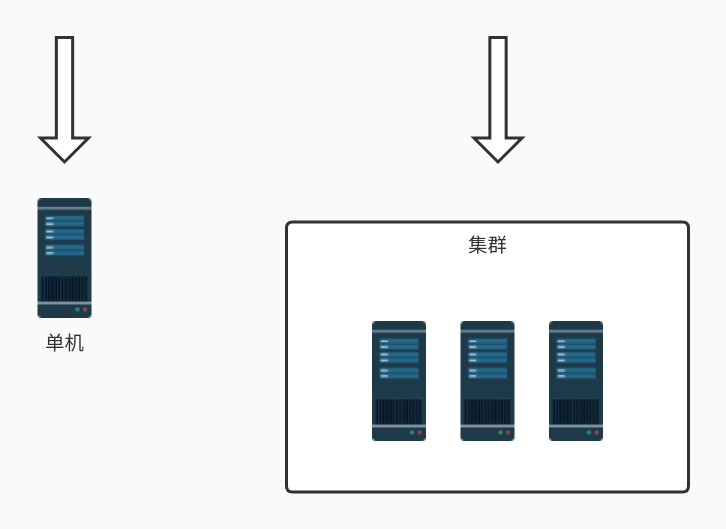 单机模式的限流非常简单,可以直接基于内存就可以实现,而集群模式的限流必须依赖于某个“中心化”的组件,比如网关或 Redis,从而引出两种不同的限流架构:网关层限流 和 中间件限流。
单机模式的限流非常简单,可以直接基于内存就可以实现,而集群模式的限流必须依赖于某个“中心化”的组件,比如网关或 Redis,从而引出两种不同的限流架构:网关层限流 和 中间件限流。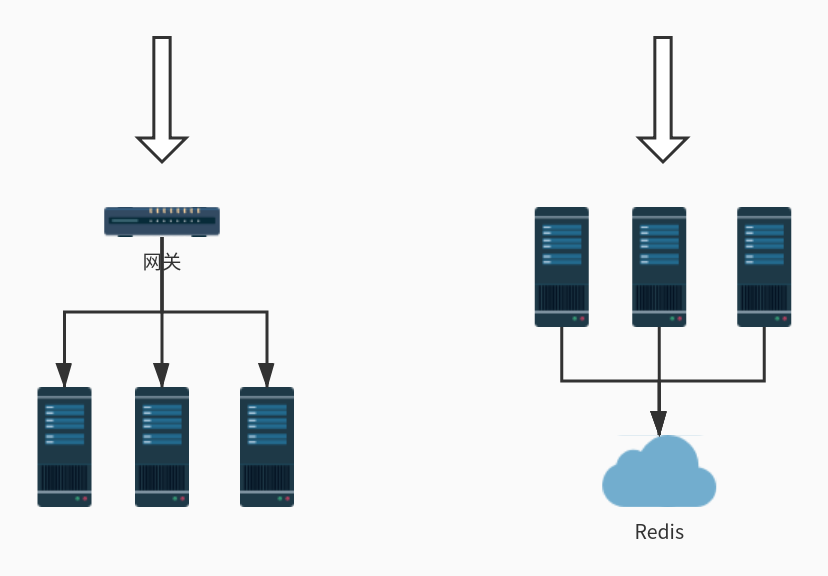
二、常见的限流算法
2.1 固定窗口算法(Fixed Window)
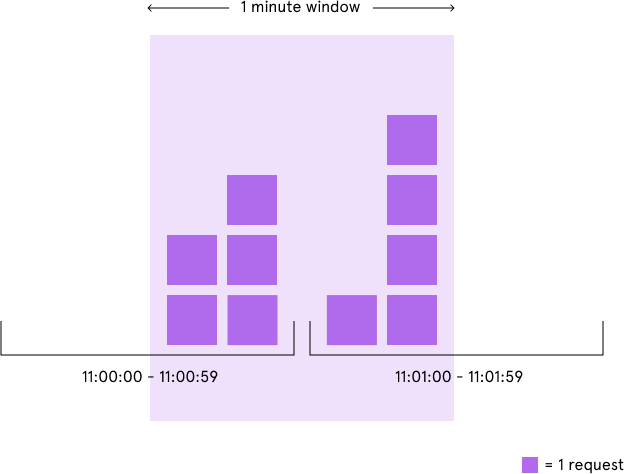
2.2 滑动窗口算法(Rolling Window 或 Sliding Window)
2.3 漏桶算法(Leaky Bucket)

2.4 令牌桶算法(Token Bucket)
生成令牌:假设有一个装令牌的桶,最多能装 M 个,然后按某个固定的速度(每秒 r 个)往桶中放入令牌,桶满时不再放入; 消费令牌:我们的每次请求都需要从桶中拿一个令牌才能放行,当桶中没有令牌时即触发限流,这时可以将请求放入一个缓冲队列中排队等待,或者直接拒绝;
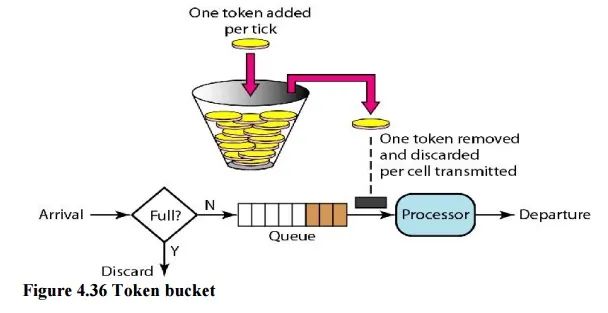
1public class TokenBucket {
2
3 private final long capacity;
4 private final double refillTokensPerOneMillis;
5 private double availableTokens;
6 private long lastRefillTimestamp;
7
8 public TokenBucket(long capacity, long refillTokens, long refillPeriodMillis) {
9 this.capacity = capacity;
10 this.refillTokensPerOneMillis = (double) refillTokens / (double) refillPeriodMillis;
11 this.availableTokens = capacity;
12 this.lastRefillTimestamp = System.currentTimeMillis();
13 }
14
15 synchronized public boolean tryConsume(int numberTokens) {
16 refill();
17 if (availableTokens < numberTokens) {
18 return false;
19 } else {
20 availableTokens -= numberTokens;
21 return true;
22 }
23 }
24
25 private void refill() {
26 long currentTimeMillis = System.currentTimeMillis();
27 if (currentTimeMillis > lastRefillTimestamp) {
28 long millisSinceLastRefill = currentTimeMillis - lastRefillTimestamp;
29 double refill = millisSinceLastRefill * refillTokensPerOneMillis;
30 this.availableTokens = Math.min(capacity, availableTokens + refill);
31 this.lastRefillTimestamp = currentTimeMillis;
32 }
33 }
34}
1TokenBucket limiter = new TokenBucket(100, 100, 1000);
三、一些开源项目
3.1 Guava 的 RateLimiter
1RateLimiter limiter = RateLimiter.create(5);
1System.out.println(limiter.acquire());
2System.out.println(limiter.acquire());
3System.out.println(limiter.acquire());
4System.out.println(limiter.acquire());
10.0
20.198239
30.196083
40.200609
1RateLimiter limiter = RateLimiter.create(5);
2System.out.println(limiter.acquire(10));
3System.out.println(limiter.acquire(1));
4System.out.println(limiter.acquire(1));
10.0
21.997428
30.192273
40.200616
1RateLimiter limiter = RateLimiter.create(2, 3, TimeUnit.SECONDS);
2System.out.println(limiter.acquire(1));
3System.out.println(limiter.acquire(1));
4System.out.println(limiter.acquire(1));
5System.out.println(limiter.acquire(1));
6System.out.println(limiter.acquire(1));
10.0
21.329289
30.994375
40.662888
50.501287
3.2 Bucket4j
Bucket Bandwidth Refill
1Bucket bucket = Bucket4j.builder().addLimit(limit).build();
2if(bucket.tryConsume(1)) {
3 System.out.println("ok");
4} else {
5 System.out.println("error");
6}
1Bandwidth limit = Bandwidth.simple(10, Duration.ofMinutes(1));
1Refill filler = Refill.greedy(5, Duration.ofMinutes(1));
2Bandwidth limit = Bandwidth.classic(10, filler);
1Refill filler = Refill.intervally(5, Duration.ofMinutes(1));


基于令牌桶算法 高性能,无锁实现 不存在精度问题,所有计算都是基于整型的 支持通过符合 JCache API 规范的分布式缓存系统实现分布式限流 支持为每个 Bucket 设置多个 Bandwidth 支持同步和异步 API 支持可插拔的监听 API,用于集成监控和日志 不仅可以用于限流,还可以用于简单的调度
3.3 Resilience4j

1// 创建一个 Bulkhead,最大并发量为 150
2BulkheadConfig bulkheadConfig = BulkheadConfig.custom()
3 .maxConcurrentCalls(150)
4 .maxWaitTime(100)
5 .build();
6Bulkhead bulkhead = Bulkhead.of("backendName", bulkheadConfig);
7
8// 创建一个 RateLimiter,每秒允许一次请求
9RateLimiterConfig rateLimiterConfig = RateLimiterConfig.custom()
10 .timeoutDuration(Duration.ofMillis(100))
11 .limitRefreshPeriod(Duration.ofSeconds(1))
12 .limitForPeriod(1)
13 .build();
14RateLimiter rateLimiter = RateLimiter.of("backendName", rateLimiterConfig);
15
16// 使用 Bulkhead 和 RateLimiter 装饰业务逻辑
17Supplier<String> supplier = () -> backendService.doSomething();
18Supplier<String> decoratedSupplier = Decorators.ofSupplier(supplier)
19 .withBulkhead(bulkhead)
20 .withRateLimiter(rateLimiter)
21 .decorate();
22
23// 调用业务逻辑
24Try<String> try = Try.ofSupplier(decoratedSupplier);
25assertThat(try.isSuccess()).isTrue();
3.4 其他
https://github.com/mokies/ratelimitj https://github.com/wangzheng0822/ratelimiter4j https://github.com/wukq/rate-limiter https://github.com/marcosbarbero/spring-cloud-zuul-ratelimit https://github.com/onblog/SnowJena https://gitee.com/zhanghaiyang/spring-boot-starter-current-limiting https://github.com/Netflix/concurrency-limits
四、在网关中实现限流
4.1 实现单机请求频率限流
Spring Cloud Gateway 中定义了关于限流的一个接口 RateLimiter,如下:
1public interface RateLimiter<C> extends StatefulConfigurable<C> {
2 Mono<RateLimiter.Response> isAllowed(String routeId, String id);
3}
1@Override
2public GatewayFilter apply(Config config) {
3 // 从配置中得到 KeyResolver
4 KeyResolver resolver = getOrDefault(config.keyResolver, defaultKeyResolver);
5 // 从配置中得到 RateLimiter
6 RateLimiter<Object> limiter = getOrDefault(config.rateLimiter,
7 defaultRateLimiter);
8 boolean denyEmpty = getOrDefault(config.denyEmptyKey, this.denyEmptyKey);
9 HttpStatusHolder emptyKeyStatus = HttpStatusHolder
10 .parse(getOrDefault(config.emptyKeyStatus, this.emptyKeyStatusCode));
11
12 return (exchange, chain) -> resolver.resolve(exchange).defaultIfEmpty(EMPTY_KEY)
13 .flatMap(key -> {
14 // 通过 KeyResolver 得到 key,作为唯一标识 id 传入 isAllowed() 方法
15 if (EMPTY_KEY.equals(key)) {
16 if (denyEmpty) {
17 setResponseStatus(exchange, emptyKeyStatus);
18 return exchange.getResponse().setComplete();
19 }
20 return chain.filter(exchange);
21 }
22 // 获取当前路由 ID,作为 routeId 参数传入 isAllowed() 方法
23 String routeId = config.getRouteId();
24 if (routeId == null) {
25 Route route = exchange
26 .getAttribute(ServerWebExchangeUtils.GATEWAY_ROUTE_ATTR);
27 routeId = route.getId();
28 }
29 return limiter.isAllowed(routeId, key).flatMap(response -> {
30
31 for (Map.Entry<String, String> header : response.getHeaders()
32 .entrySet()) {
33 exchange.getResponse().getHeaders().add(header.getKey(),
34 header.getValue());
35 }
36 // 请求允许,直接走到下一个 filter
37 if (response.isAllowed()) {
38 return chain.filter(exchange);
39 }
40 // 请求被限流,返回设置的 HTTP 状态码(默认是 429)
41 setResponseStatus(exchange, config.getStatusCode());
42 return exchange.getResponse().setComplete();
43 });
44 });
45}
1public interface KeyResolver {
2 Mono<String> resolve(ServerWebExchange exchange);
3}
1public interface KeyResolver {
2 Mono<String> resolve(ServerWebExchange exchange);
3}
4比如下面的 HostAddrKeyResolver 可以根据 IP 来限流:
5public class HostAddrKeyResolver implements KeyResolver {
6 @Override
7 public Mono<String> resolve(ServerWebExchange exchange) {
8 return Mono.just(exchange.getRequest().getRemoteAddress().getAddress().getHostAddress());
9 }
10}
我们继续看 Spring Cloud Gateway 的代码发现,RateLimiter 接口只提供了一个实现类 RedisRateLimiter:
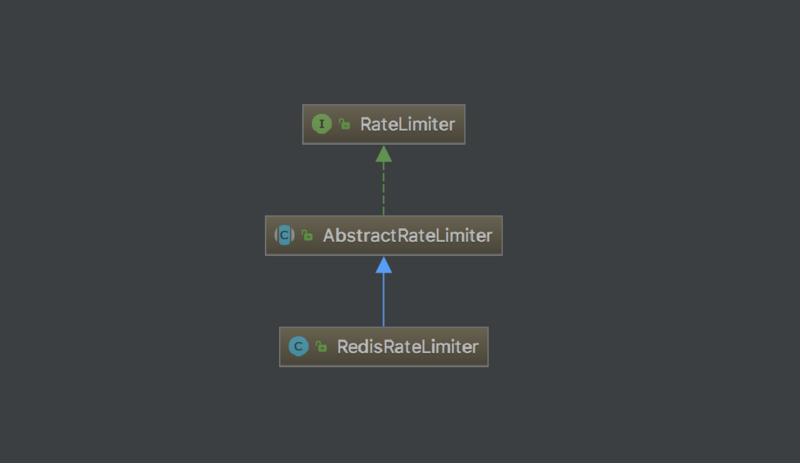
很显然是基于 Redis 实现的限流,虽说通过 Redis 也可以实现单机限流,但是总感觉有些大材小用,而且对于那些没有 Redis 的环境很不友好。所以,我们要实现真正的本地限流。
1public Mono<Response> isAllowed(String routeId, String id) {
2 Config routeConfig = loadConfiguration(routeId);
3
4 // How many requests per second do you want a user to be allowed to do?
5 int replenishRate = routeConfig.getReplenishRate();
6
7 // How many seconds for a token refresh?
8 int refreshPeriod = routeConfig.getRefreshPeriod();
9
10 // How many tokens are requested per request?
11 int requestedTokens = routeConfig.getRequestedTokens();
12
13 final io.github.resilience4j.ratelimiter.RateLimiter rateLimiter = RateLimiterRegistry
14 .ofDefaults()
15 .rateLimiter(id, createRateLimiterConfig(refreshPeriod, replenishRate));
16
17 final boolean allowed = rateLimiter.acquirePermission(requestedTokens);
18 final Long tokensLeft = (long) rateLimiter.getMetrics().getAvailablePermissions();
19
20 Response response = new Response(allowed, getHeaders(routeConfig, tokensLeft));
21 return Mono.just(response);
22}
有意思的是,这个类 还有一个早期版本,是基于 Bucket4j 实现的:
1public Mono<Response> isAllowed(String routeId, String id) {
2
3 Config routeConfig = loadConfiguration(routeId);
4
5 // How many requests per second do you want a user to be allowed to do?
6 int replenishRate = routeConfig.getReplenishRate();
7
8 // How much bursting do you want to allow?
9 int burstCapacity = routeConfig.getBurstCapacity();
10
11 // How many tokens are requested per request?
12 int requestedTokens = routeConfig.getRequestedTokens();
13
14 final Bucket bucket = bucketMap.computeIfAbsent(id,
15 (key) -> createBucket(replenishRate, burstCapacity));
16
17 final boolean allowed = bucket.tryConsume(requestedTokens);
18
19 Response response = new Response(allowed,
20 getHeaders(routeConfig, bucket.getAvailableTokens()));
21 return Mono.just(response);
22}
4.2 实现分布式请求频率限流
1local tokens_key = KEYS[1]
2local timestamp_key = KEYS[2]
3
4local rate = tonumber(ARGV[1])
5local capacity = tonumber(ARGV[2])
6local now = tonumber(ARGV[3])
7local requested = tonumber(ARGV[4])
8
9local fill_time = capacity/rate
10local ttl = math.floor(fill_time*2)
11
12local last_tokens = tonumber(redis.call("get", tokens_key))
13if last_tokens == nil then
14 last_tokens = capacity
15end
16
17local last_refreshed = tonumber(redis.call("get", timestamp_key))
18if last_refreshed == nil then
19 last_refreshed = 0
20end
21
22local delta = math.max(0, now-last_refreshed)
23local filled_tokens = math.min(capacity, last_tokens+(delta*rate))
24local allowed = filled_tokens >= requested
25local new_tokens = filled_tokens
26local allowed_num = 0
27if allowed then
28 new_tokens = filled_tokens - requested
29 allowed_num = 1
30end
31
32if ttl > 0 then
33 redis.call("setex", tokens_key, ttl, new_tokens)
34 redis.call("setex", timestamp_key, ttl, now)
35end
36
37return { allowed_num, new_tokens }
1spring:
2 cloud:
3 gateway:
4 routes:
5 - id: test
6 uri: http://httpbin.org:80/get
7 filters:
8 - name: RequestRateLimiter
9 args:
10 key-resolver: '#{@hostAddrKeyResolver}'
11 redis-rate-limiter.replenishRate: 1
12 redis-rate-limiter.burstCapacity: 3
1@Bean
2public RouteLocator myRoutes(RouteLocatorBuilder builder) {
3 return builder.routes()
4 .route(p -> p
5 .path("/get")
6 .filters(filter -> filter.requestRateLimiter()
7 .rateLimiter(RedisRateLimiter.class, rl -> rl.setBurstCapacity(3).setReplenishRate(1)).and())
8 .uri("http://httpbin.org:80"))
9 .build();
10}
4.3 实现单机并发量限流
1public class SemaphoreTest {
2
3 private static ExecutorService threadPool = Executors.newFixedThreadPool(100);
4 private static Semaphore semaphore = new Semaphore(10);
5
6 public static void main(String[] args) {
7 for (int i = 0; i < 100; i++) {
8 threadPool.execute(new Runnable() {
9 @Override
10 public void run() {
11 try {
12 semaphore.acquire();
13 System.out.println("Request processing ...");
14 semaphore.release();
15 } catch (InterruptedException e) {
16 e.printStack();
17 }
18 }
19 });
20 }
21 threadPool.shutdown();
22 }
23}
1public class AtomicLongTest {
2
3 private static ExecutorService threadPool = Executors.newFixedThreadPool(100);
4 private static AtomicLong atomic = new AtomicLong();
5
6 public static void main(String[] args) {
7 for (int i = 0; i < 100; i++) {
8 threadPool.execute(new Runnable() {
9 @Override
10 public void run() {
11 try {
12 if(atomic.incrementAndGet() > 10) {
13 System.out.println("Request rejected ...");
14 return;
15 }
16 System.out.println("Request processing ...");
17 atomic.decrementAndGet();
18 } catch (InterruptedException e) {
19 e.printStack();
20 }
21 }
22 });
23 }
24 threadPool.shutdown();
25 }
26}
1semaphore.acquire();
2System.out.println("Request processing ...");
3semaphore.release();
1try {
2 semaphore.acquire();
3 System.out.println("Request processing ...");
4} catch (InterruptedException e) {
5 e.printStack();
6} finally {
7 semaphore.release();
8}
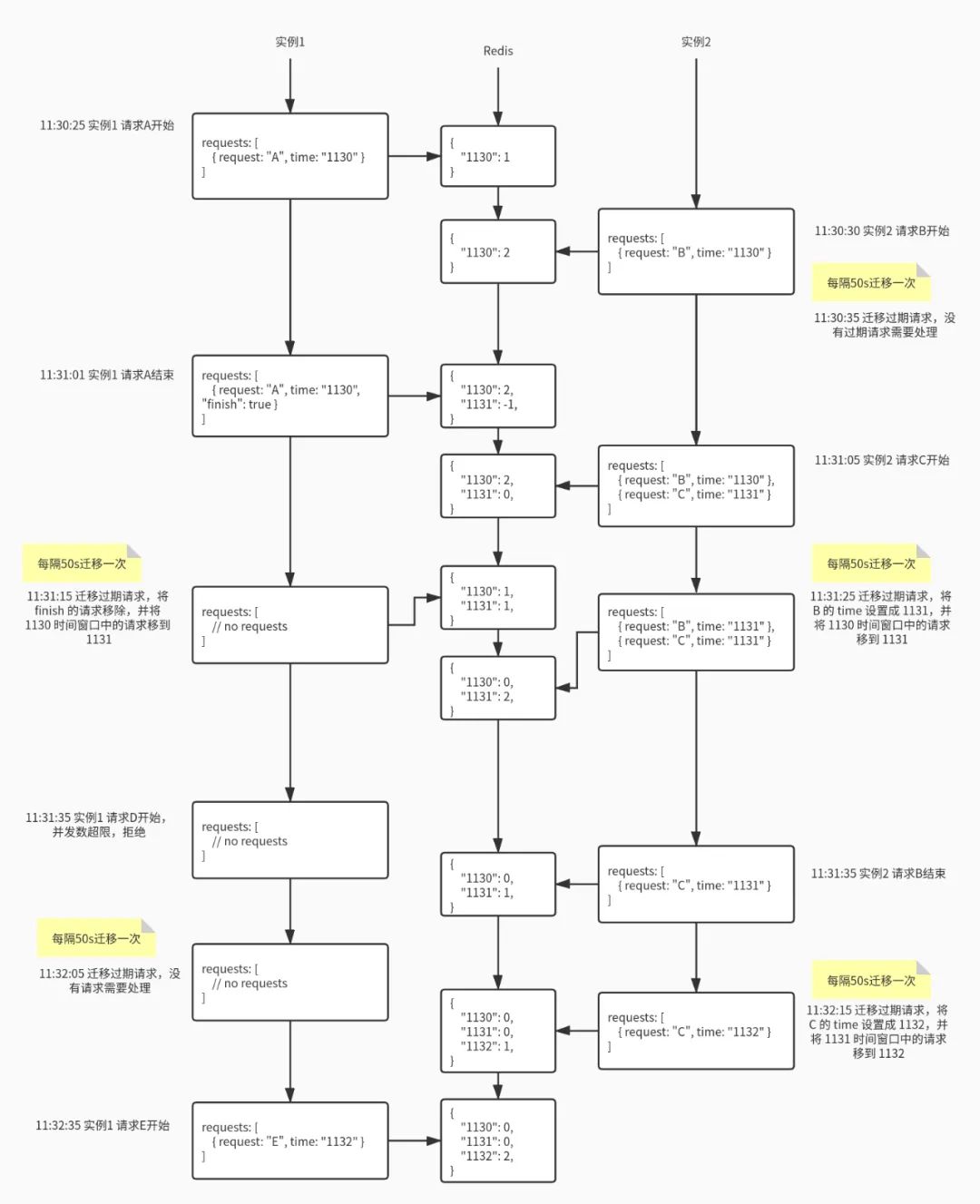
请求结束时,直接在 Redis 中当前时间窗口减一即可,就算是负数也没关系。请求列表中的该请求不用急着删除,可以打上结束标记,在迁移线程中统一删除(当然,如果请求的开始时间和结束时间在同一个窗口,可以直接删除); 迁移的时间间隔要小于时间窗口,一般设置为 30s; Redis 中的 key 一定要设置 TTL,时间至少为 2 个时间窗口,一般设置为 3 分钟; 迁移过程涉及到“从上一个时间窗口减”和“在当前时间窗口加”两个操作,要注意操作的原子性; 获取当前并发量可以通过 MGET 一次性读取两个时间窗口的值,不用 GET 两次; 获取并发量和判断并发量是否超限,这个过程也要注意操作的原子性。
总结
评论
